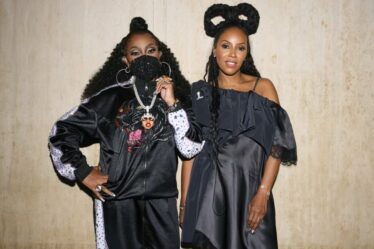
It’s difficult to say if my first pair of Doc Martens boots were a Christmas present or a birthday present, since both fall on 25 December. Ten years later, I can’t remember if I opened them in the morning (which would make it Christmas, as far as I’m concerned), or the afternoon (which would make it my birthday). What I do know is I had just turned 17, they were luminous blue, and I loved them with all my teenage heart.
What’s strange is that over the next few years I barely wore them. Each term I devotedly ferried them up to university and then let them gather dust as I tried to fit in with the more conventional going-out attire of my peers. This, unfortunately for me, meant bodycon dresses and high heels – not an easy ensemble to pull off while sitting in a wheelchair.
Luckily, by the time I came back to London fashions were changing and I was pretty much over clubbing. As I settled into work and a social life based entirely in pubs, the Docs came out more and more. Which is when I discovered something new and interesting: when I was wearing my DMs, people were less patronising, less likely to randomly comment on my disability, and more likely to start normal conversations. They were the ultimate ice-breaker.
Naturally, I bought another pair. These new DMs – which carried the added satisfaction of being bought with my own money – were dark red and floral-patterned. I loved them just as much as the blue ones, wearing them to gigs and events I wouldn’t have dreamed of going to just a few years before. People actually stopped me on the street to exclaim: “I love your shoes!” It made me feel like a different person, someone cool and confident. I loved that, for the first time, people were commenting on an aesthetic choice I’d made for myself before they mentioned my wheels. It was liberating.
I decided to be the girl who wore Doc Martens. I bought a black pair for work, enjoying that even these “sensible” DMs sported their signature bright yellow stitching. What’s more, unlike all my other work shoes, they were actually comfortable for my perennially sore feet, and stayed on despite my constant involuntary wiggling. They were sturdy. I liked the heft of them.
People expected a young, blond disabled woman to be dainty and quiet, to wear frills and try to blend in. My growing collection of DMs became, at least in my own mind, evidence of my increasing willingness to break the mould. When I wore them, they gave me the boost to speak up, raise my voice and be noticed on my own terms. Yes, they are just a few pairs of shoes, but they are also a statement about who I am.
A decade on from the gift of a bright blue pair of Doc Martens, I signed a book deal. In celebration, I bought myself an even brighter pink pair. They are my favourite yet. A few weeks after they arrived, I was struck with anxiety about a speech I had to give for work. I hadn’t planned on wearing the boots, but just before I headed out the door, I changed into them. I looked at them in the mirror and thought: “You’ve got this.” The speech was a success.
If it hadn’t been for that original Christmas/birthday present, I might never have learned the confidence-giving power of a pair of boots. It’s a lesson I won’t forget; indeed, it’s one I keep learning. Maybe no one needs multiple pairs of Doc Martens, but the heart (and my anxious brain) wants what it wants. I’m sure you can guess what’s in this year’s letter to Santa.



